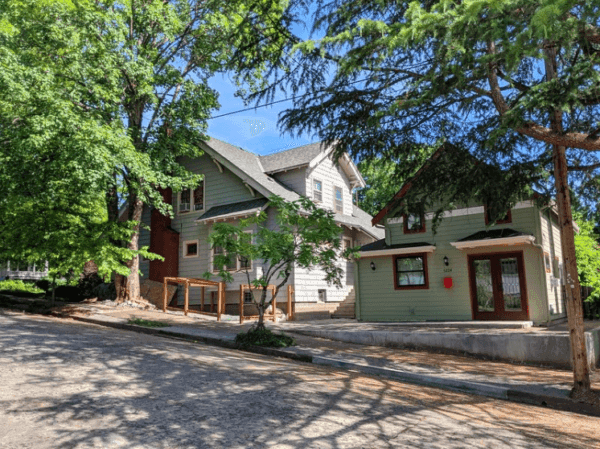
News
By Helen Hope, February 8, 2022

The Biden administration hosted a virtual webinar on February 1st highlighting accessory dwelling units (ADUs) as one way to increase affordable housing stock across the country. An esteemed group of fourteen thought leaders, advocates, and government officials from across the country convened to share their expertise and insights, advocate for ADUs, and discuss current barriers in many communities that hinder their development.
Accessory dwelling units (ADUs) offer flexibility, affordability, and potential income to both homeowners and renters. During the webinar hosted by the White House, panelists noted in particular that ADUs:
- Can help to address the oversupply and high cost of single family homes across the nation.
- Empower homeowners to make decisions about the use of their privately-owned residential properties.
- Increase housing supply and diversity.
- Offer an affordable, multigenerational housing option. Panelist Rodney Harrell of AARP stated that 60% of adults would be open to living in ADUs.
- Enable renters to live near where they work and contribute to walkability. (Check out AARP’s Livability Index to see how livable your community is.)
- Help homeowners generate income and financial leverage.
“California has been going through an ADU Revolution”
– Panelist Denise Pinkston, Board President of housing advocacy group Casitas Coalition
Dr. Karen Chapple of UC Berkeley opened the conversation by summarizing recent research on ADUs and housing markets across the country, which demonstrates the growing economy and lucrative demand for ADUs nationally. In California specifically, ADU construction created $4-5 billion in private investment without any public subsidies.
“What’s more important? Housing people or housing cars?”
– Panelist Robert Liberty, Executive Director of 1000 Friends of Oregon
The speakers highlighted two major types of barriers to ADU construction–regulatory and financial. In most single-family residential areas, communities, zoning restrictions prohibit the development of ADUs altogether. In other places, parking mandates, lot size requirements, or onerous permitting processes make it difficult for homeowners, interested in building ADUs, to make them work.
“Friendly regulatory environment, financing, and homeowner education.”
– Moderator Erika Poethig, Special Assistant to the President for Housing and Urban Policy
Reforming restrictive zoning codes, providing technical assistance and expanding financing options for homeowners, and educating neighbors about the benefits of ADUs are key strategies to advance ADU construction across the country. Mayor Miro Weinberger of Burlington, VT shared how in his city, educational summits and ADU workshops helped change public opinion and led to major reforms of their zoning code. Panelists from the financial institutions Freddie Mac and Fannie Mae described financial strategies, including waving of development fees and homeowner tax incentives, that their companies have taken to help with financing ADUs.
As we look to 2022, the Form-Based Codes Institute and Smart Growth America will continue to work with communities across the country, through technical assistance and local capacity building, to advocate for policies that broaden housing affordability, including those that support ADUs. We welcome your ideas and examples of successful zoning reform for ADUs and other approaches to expand housing access through context-sensitive development approaches.
To check out SGA’s recent publication on zoning reform with form-based codes, click here.
To watch a recording of the event, follow the link here.
Related News

© 2025 Smart Growth America. All rights reserved
Site By3Lane Marketing










